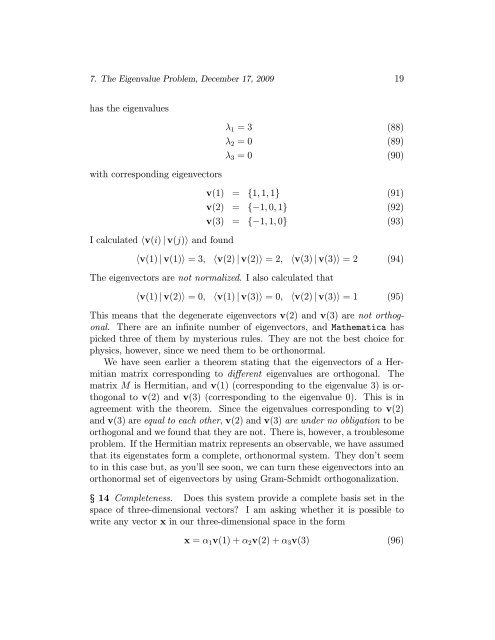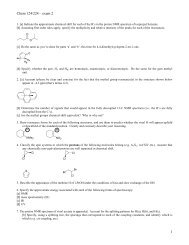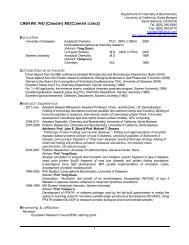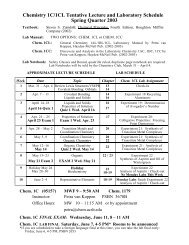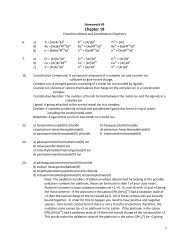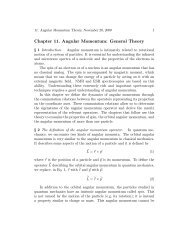Chapter 7. The Eigenvalue Problem
Chapter 7. The Eigenvalue Problem
Chapter 7. The Eigenvalue Problem
Create successful ePaper yourself
Turn your PDF publications into a flip-book with our unique Google optimized e-Paper software.
<strong>7.</strong> <strong>The</strong> <strong>Eigenvalue</strong> <strong>Problem</strong>, December 17, 2009 19<br />
has the eigenvalues<br />
with corresponding eigenvectors<br />
Icalculatedv(i) | v(j) and found<br />
λ 1 =3 (88)<br />
λ 2 =0 (89)<br />
λ 3 =0 (90)<br />
v(1) = {1, 1, 1} (91)<br />
v(2) = {−1, 0, 1} (92)<br />
v(3) = {−1, 1, 0} (93)<br />
v(1) | v(1) =3, v(2) | v(2) =2, v(3) | v(3) =2 (94)<br />
<strong>The</strong> eigenvectors are not normalized. I also calculated that<br />
v(1) | v(2) =0, v(1) | v(3) =0, v(2) | v(3) =1 (95)<br />
This means that the degenerate eigenvectors v(2) and v(3) are not orthogonal.<br />
<strong>The</strong>re are an infinite number of eigenvectors, and Mathematica has<br />
picked three of them by mysterious rules. <strong>The</strong>y are not the best choice for<br />
physics, however, since we need them to be orthonormal.<br />
We have seen earlier a theorem stating that the eigenvectors of a Hermitian<br />
matrix corresponding to different eigenvalues are orthogonal. <strong>The</strong><br />
matrix M is Hermitian, and v(1) (corresponding to the eigenvalue 3) is orthogonal<br />
to v(2) and v(3) (corresponding to the eigenvalue 0). This is in<br />
agreement with the theorem. Since the eigenvalues corresponding to v(2)<br />
and v(3) are equaltoeachother, v(2) and v(3) are under no obligation to be<br />
orthogonal and we found that they are not. <strong>The</strong>re is, however, a troublesome<br />
problem. If the Hermitian matrix represents an observable, we have assumed<br />
that its eigenstates form a complete, orthonormal system. <strong>The</strong>y don’t seem<br />
to in this case but, as you’ll see soon, we can turn these eigenvectors into an<br />
orthonormal set of eigenvectors by using Gram-Schmidt orthogonalization.<br />
§ 14 Completeness. Does this system provide a complete basis set in the<br />
space of three-dimensional vectors I am asking whether it is possible to<br />
write any vector x in our three-dimensional space in the form<br />
x = α 1 v(1) + α 2 v(2) + α 3 v(3) (96)


